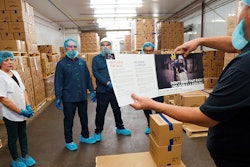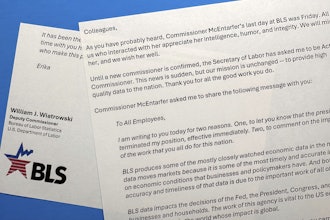
 Christine Tutssel
Christine TutsselA single decision by a manufacturing employee can make a huge impact on an organization (positive or negative). Forward-looking manufacturers are now investing in a modern learning ecosystem for employees that can help them realize important safety best practices and more.
According to a survey conducted by Ipsos, nearly half of all manufacturing employees, including machine operators, say they’ve never received formal training even though many of these jobs involve personal risk that can lead to safety incidents. Historically, it has been difficult to train manufacturing employees properly since time off the floor can slow down production and maintenance repairs. And, overhauls might be required in a plant while the person responsible for that machinery is away. Given these challenges, it is critical to support all employees with the right content in the right format at a convenient time with technology. However, organizations that follow five guiding principles for maximizing learning can help workers obtain the knowledge they need, when and where they need it.
No. 1 - Acknowledge the reality of the 70/20/10 Model for Learning and Development. Most learning already takes place on the job and for manufacturing workers, that could be all the learning they receive. For most organizations, individuals obtain 70 percent of their knowledge from job-related experiences, 20 percent from interactions with others and 10 percent from formal education. Most learning happens through hands-on experience on the manufacturing floor or the production line. The question is, are organizations supporting learning where learning is actually happening?
Learning still looks like school to most people because it is formal, structured and academic. In the real world, learning happens every day and it isn’t event driven. Learning should fit into the day-to-day workflow. Organizations should give workers the knowledge they need where they are rather than disrupting the workers’ day to bring them to the learning.
No. 2 - Fit learning experiences into the flow of work. It is important to recognize how work gets done so learning can be delivered effectively without pulling employees away from their job. Technology like microlearning — a way of delivering content to learners in small 3-to-5 minute bursts via web-enabled devices — can help weave learning into natural workflows. Knowing what your workers are doing and what their day looks like is key to identifying opportunities for daily learning.
For example, one major U.S. retailer implemented microlearning in order to communicate their overall corporate safety culture, reduce safety incidents across distribution centers and improve employee knowledge and retention about safety practices. Their employees complete 3-5 minute bursts of training during a natural downtime in their day. By asking employees to complete these short daily training sessions, and then rewarding those employees, the organization was able to decrease recordable incidents in the retailer’s distribution centers and knowledge levels on safety topics increased by 15%. Additionally, the retailer was able to measure if employees applied information they learned and pinpoint safety procedures that needed more emphasis, based on employees’ answers. Now, they can reinforce those topics in future training Q&As and videos.
No. 3 - Make learning engaging. According to Gallup’s 2017 State of the American Workplace Report, disengaged employees cost companies between $450-550 billion annually. However, when employees are engaged they are more productive, work quality improves and there are usually less errors or safety incidents. Unfortunately, learning initiatives don’t always support worker engagement, especially if it is modeled after a course-based, traditional academic approach.
Instead, companies should provide learning that appeals to workers, otherwise, they won’t be likely to retain information or want to complete training at all. Everyone wants knowledge and most want to do a good job, but employers need to ensure that workers are offered optimal learning experiences so they can perform at their best.
No. 4 - Enable frontline managers. Companies hire managers because they excel at their job, not necessarily because they are good teachers. Despite this, managers are still the most important advocate for corporate learning, as they are in the trenches with employees every day. They have the ability to advocate for a culture of learning or conversely limit workers from that culture.
Frontline managers:
- Direct employees’ priorities, schedule, and capacity
- Assign employee accountability
- Connect employees to workplace knowledge sources
- Are an employee’s primary source for feedback and evaluation
Given this, it is critical that companies help managers support their workers by providing them with the resources they need, including executive level encouragement, devoted time to learning and technology tools needed to promote an efficient, engaging experience.
No. 5 - Provide value and incentives. Resources and support should provide a clear value proposition, concentrating on employee engagement. A close focus should be put on business and individual value while making it an enjoyable experience that employees will want to revisit, which might include incentives as simple as gamification and other rewards. Also, if workers don’t understand why completing this content, e.g., how watching a video or reading a checklist will help them do their job, how it will benefit them and the organization, there is no perceived value and no guarantee workers will remember and/or use this critical safety information.
Creating a continuous learning experience that is less event driven and more focused on providing what workers need to know when they need it, in small bite-sized pieces is key. Don’t assume people can do eight hours of learning in a back room just because they work at your organization. Think about the person first (their unique backgrounds, experiences, capabilities and limitations) and the employee second.
Christine Tutssel is SVP of Strategic Initiatives at Axonify.























